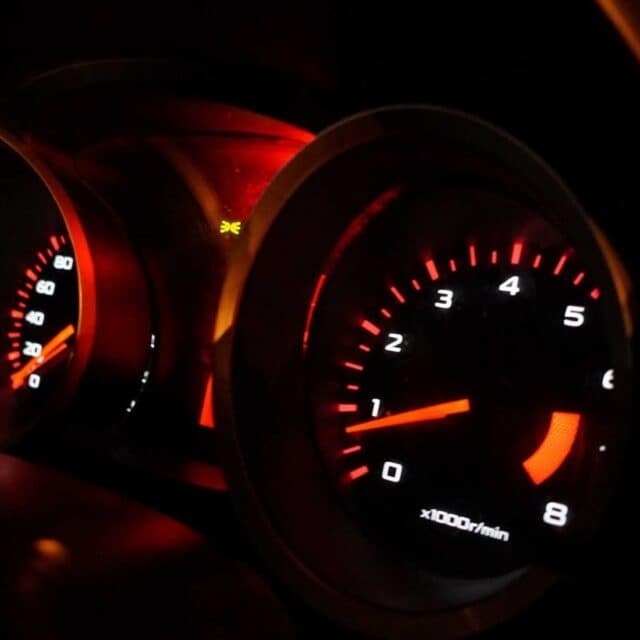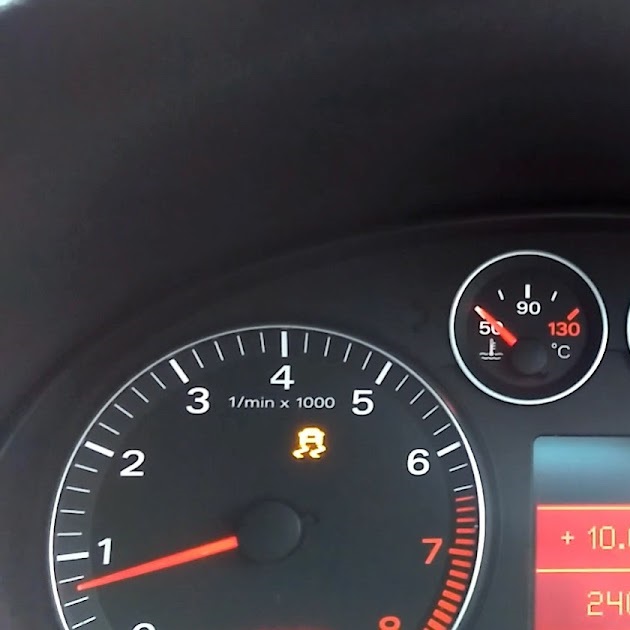The Anti-lock Braking System (ABS) light is a crucial indicator on your car’s dashboard. When it illuminates, it signals potential issues with your vehicle’s braking system. Understanding why the ABS light turns on and how to address it can be vital for your safety and overall vehicle maintenance.
What Is the ABS System?
The Basics of ABS
The Anti-lock Braking System, or ABS, became standard in most vehicles to help prevent skidding during sudden braking. It essentially maintains traction between the tires and the road by preventing the wheels from locking up. This system helps you steer while braking hard and avoids accidents caused by loss of control.
Components of an ABS
An ABS is composed of several key components. These include sensors on each wheel, an electronic control unit (ECU), a hydraulic control unit, and a pump. Each part plays a vital role in ensuring the ABS functions correctly. When any of these components fail, the ABS light on the dashboard can illuminate.
How ABS Works
When you brake hard, the wheels can lock up, especially on slick surfaces. The ABS detects this potential lockup via sensors. The system then adjusts braking pressure to keep the wheels from locking, thereby maintaining traction and control. This adjustment happens in milliseconds, significantly enhancing your ability to steer while braking.
Common Reasons for the ABS Light to Turn On
Faulty Wheel Speed Sensors
One of the most common reasons for the ABS light to come on is a faulty wheel speed sensor. These sensors monitor the speed of each wheel and send this data to the ECU. If one or more sensors fail, the ABS system can’t determine wheel speed correctly, which triggers the light.
Issues with the ABS Module
Another common cause for the ABS light is a problem with the ABS module itself. Over time, the wiring and connectors can corrode or get damaged. Any disruption in the electrical supply will trigger the ABS light. Replacing an ABS module can be costly but is often necessary to ensure safety.
Low Brake Fluid
Low brake fluid can also cause the ABS light to illuminate. The ABS relies on brake fluid to function correctly. If the fluid is too low, it may not provide the necessary pressure to operate the system. Regularly checking and topping off your brake fluid can prevent this issue.
Malfunctioning Hydraulic Pump
The hydraulic pump in the ABS system helps restore pressure to the brakes when the ECU detects wheel lock. If the pump fails or becomes inefficient, the ABS light will likely come on. Addressing this issue often requires professional diagnostic tools and specialized skills, making it less suitable for DIY fixes.
Worn Brake Pads
While not as common, worn brake pads can also trigger the ABS light. The ABS system works in conjunction with the regular braking system. If the brake pads are too worn, the ABS may struggle to engage properly, causing the light to illuminate as a warning.
Diagnosing ABS Light Issues
Using an OBD-II Scanner
One of the most efficient ways to diagnose ABS light issues is by using an OBD-II (On-Board Diagnostics) scanner. This device can read error codes stored in the car’s ECU. These codes can often pinpoint the exact issue, whether it’s a faulty sensor, low brake fluid, or another problem.
Visual Inspection
Sometimes, a simple visual inspection can identify the problem. Check the wheel speed sensors for any visible damage or dirt that might be causing them to malfunction. Look at the ABS module and its wiring for signs of corrosion or physical damage.
Professional Diagnosis
If you’re not comfortable diagnosing the issue yourself, seeking professional help is advisable. Mechanics have specialized tools and knowledge to quickly identify and fix ABS-related problems. A professional diagnosis can save you time and prevent misdiagnosis, which could lead to further complications.
Fixing Common ABS Issues
Replacing Wheel Speed Sensors
If faulty wheel speed sensors are the issue, replacing them is often straightforward. Remove the wheel and locate the sensor near the brake rotor. Disconnect the old sensor and replace it with a new one. Ensure the new sensor is compatible with your vehicle model to avoid further issues.
Repairing or Replacing the ABS Module
If the ABS module is faulty, you might need to replace it. This task is more complex and often requires professional help. Disconnect the battery before starting any work to avoid electrical shocks. Remove the old module and replace it with a new one, ensuring all the wiring is correctly reconnected.
Refilling Brake Fluid
If low brake fluid is the culprit, refill the brake fluid to the required level. Make sure to use the correct type of brake fluid specified for your vehicle. Once refilled, check for any leaks that might be causing the fluid level to drop. Fix any identified leaks to prevent future issues.
Replacing Brake Pads
If worn brake pads are triggering the ABS light, replacing them can solve the problem. Lift the car and remove the wheels. Unbolt the caliper and take out the old brake pads. Insert new brake pads and reassemble the caliper. Ensure everything is tightly secured before lowering the vehicle back to the ground.
Preventive Measures for ABS Light Issues
Regular Maintenance
Regularly servicing your vehicle can prevent many ABS issues. This includes checking the brake fluid, inspecting brake pads, and ensuring the wheel speed sensors are clean and undamaged. Simple maintenance tasks can save you from more significant, costlier problems down the line.
Use Quality Parts
Using high-quality parts for repairs and replacements can extend the life of your ABS. Cheap or incompatible parts may not function correctly, causing more issues. Invest in good quality parts, especially for critical systems like the ABS, to ensure safety and reliability.
Frequent Checks
Perform frequent checks on the ABS system. Listen for unusual noises when braking, monitor the dashboard for any warning lights, and observe how the car stops during hard braking. Early detection of potential issues can lead to quicker, less expensive fixes.
The Importance of Addressing ABS Light Issues
Safety Considerations
Ignoring an illuminated ABS light can jeopardize your safety. The ABS helps maintain control and prevent skidding during emergency braking. A malfunctioning ABS system might not provide the required support when you need it most, increasing the risk of accidents.
Legal Implications
In some regions, having a working ABS system is a legal requirement. If your ABS light is on, your vehicle might fail inspections, leading to fines or the inability to legally drive your car. Addressing the issue promptly can save you from legal troubles.
Financial Impact
Delaying the repair of ABS issues can lead to more significant, costlier problems. A minor sensor replacement might become a full ABS system overhaul if not addressed in time. Quick action can save you money in the long run by preventing more extensive damage.
Conclusion
Understanding why the ABS light comes on and taking immediate action can protect both your safety and your wallet. Whether it’s a faulty sensor, low brake fluid, or a more complex issue with the ABS module, diagnosing and fixing the problem promptly is crucial. Regular maintenance and using quality parts can prevent most ABS light issues, ensuring your vehicle remains safe and reliable.
Final Thoughts
Never underestimate the importance of the ABS light. It serves as an early warning system indicating that something is amiss with your braking system. Addressing the issue as soon as the light comes on can keep you safe on the roads and prevent more costly repairs. Regular checks and maintenance will also go a long way in ensuring your ABS system functions correctly, providing you with the peace of mind you deserve while driving.



